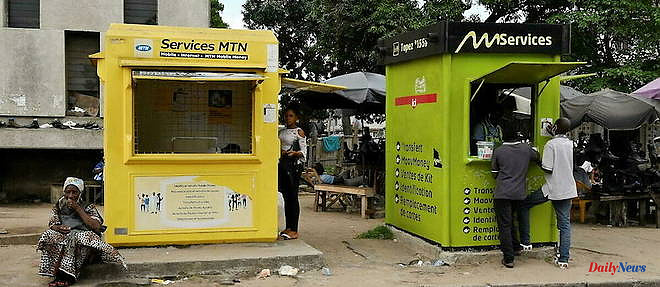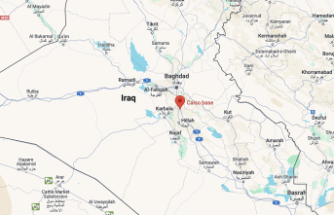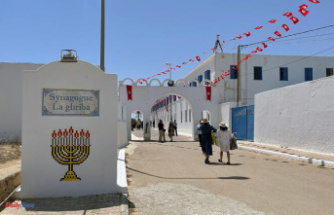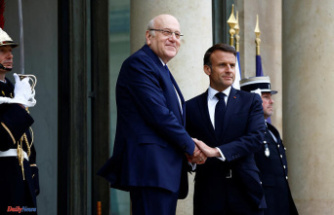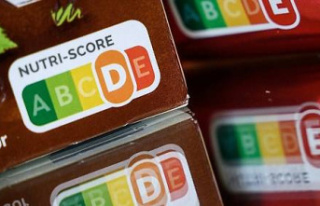In Barcelona, the Mobile World Congress (MWC) spread over 8 exhibition halls and recorded over the 4 days of the exhibition, from February 27 to March 2, nearly 80,000 visitors. Telecommunications professionals from 176 countries to discover the latest innovations. Welcome to the world of tomorrow: Artificial Intelligence (AI), Metaverse, Internet of Things (IoT), 5G and 6G… Experiences are offered, attend a live session in a nightclub by putting on a virtual reality headset while dancing with robots. Further on, another robot gives you a health diagnosis. At a time when all doctors are scarce, in Europe as in Africa, will robots be a solution?
In this proliferation of new digital technologies, Africans are rather discreet. Except in one area where they pioneered: mobile money. “If we look at this Congress today, 5G, IoT, there's so much tech! But how is this going to help us move the money around in Africa? says Sitoyo Lopokoiyit, Managing Director of M-Pesa, speaking at a conference "The rise of Fintech disruption". Yes, M-Pesa, launched in 2007 by telecommunications operator Safaricom in Kenya, was the first mobile money service that made it possible to send money from one mobile phone to another. A revolution born in Africa. First thanks to the SIM toolbox, then, two years later, based on the USSD protocol (Unstructured Supplementary Service Data) which makes it possible to trigger a service by sending a message.
USDD remains widely used, in the world and especially in Africa, where there is no Internet network. And it has also become a good means of financial inclusion for unbanked populations. In addition to simple money transfer, USDD has enabled other banking operations through a simple mobile phone.
In the wake of Safaricom with M-Pesa, telecom operators like MTN with Momo, Orange with Orange Money or Moov with Moov money have launched their own mobile wallet. Over the years, the uses have expanded: payment at a beverage distributor, international money transfer, consultation of bank accounts, payment of bills, salaries, phone card recharges, purchases. “We started with financial inclusion and grew on the continent. Then we offered financial services and services in the field of health, especially during Covid, but also in the field of agriculture and other sectors,” comments Sitoyo Lopokoiyit.
Worldwide, “there are 1.35 billion registered accounts today that process $1 trillion in transactions a year. That's nearly $2 million per minute of transactions,” calculates the 2022 GSMA Annual Report.
“Mobile money is not just a profitable business. It is also a key way to advance financial inclusion and help achieve the United Nations Sustainable Development Goals. Millions of previously unbanked families now have access to safe and secure financial services that are transforming their lives,” said GSMA Chief Executive Mats Granryd, opening the report. He also praises the merits of the GSMA Innovation Fund, which has enabled the deployment of innovative and useful initiatives. “One of my favorite examples is the rapid development of pay-as-you-go solar home systems in off-grid regions. These systems are giving millions of people access to clean, affordable energy for the first time,” he said.
The Covid-19 pandemic has accelerated the adoption of mobile money. Bulk payments are on the rise with more and more companies paying salaries directly to their employees' accounts. Governments like Togo have been disbursing aid via mobile money to reach those most affected by the pandemic, and international remittances jumped 48% in 2021. Sub-Saharan Africa takes the lion's share: 605 million registered accounts (up 17%), of which 183 million are active, 36.6 billion transactions up 23% and a transaction amount of $697 billion, up 40% (out of the $1 trillion in the world).
The continuous progress of mobile money has been made thanks to the broadening of its base. Transaction flows between banks and mobile money platforms are showing strong growth. Up 46%, they have more than doubled since 2019. The continued acceleration of these operations is based on the complementary relationships that have been forged in recent years between banking systems and the mobile money sector and reinforces the role key to mobile money within the financial ecosystem.
“In fact, M-Pesa is not a product, it is a platform for the fintech community. We are not in competition with them, but we offer them the opportunity to use our rails to provide better products and services,” says Sitoyo Lopokoiyit.
Another technology is set to revolutionize mobile money on the continent. In 2018, M-Pesa traveled to China to observe Alipay and Tencent and their cool apps. Alipay, with its 40,000 integrated apps, has created a new e-commerce market. "We thought of doing the same with M-Pesa," says Sitoyo Lopokoiyit. We built our new awesome app from scratch and see it as the future of the M-Pesa platform. In Kenya, many of the smartphones in use that cost around $30 have limited capacity. Once loaded WhatsApp, TikTok and YouTube, there is no room left. The idea is therefore to design mini-applications that are extremely light on memory and zero-rated for the data hosted on the super app. Launched in 2021, M-Pesa's super app offers around 30 mini-apps (ticketing, insurance, etc.) and has been a great success, with 8 million downloads and 3 million active customers.
“We have a unique opportunity in the fintech community to create new economies. There are things to be done in insurance, payment, in more inclusive finance. We are taking a leap forward. With these new economies, we are creating new job opportunities, on the continent, but also in the world”, anticipates Sitoyo Lopokoiyit. “The African continent is a continent of diversity, of opportunities: today, more than 60% of the population is under 21 years old. In Europe, it is less than 20%. Fintechs provide great opportunities to innovate, to overcome obstacles, especially through platforms like M-Pesa […] In the next decade, 16% of consumers will be on the continent. […] I encourage you all to invest in Africa. This continent is rising,” he enthuses.

